A New Dawn in Pediatric Diagnostics
The landscape of pediatric testing and diagnosis is rapidly transforming, fueled by advances in genetic technologies, imaging innovations, artificial intelligence, and patient-centered care models. These breakthroughs promise earlier detection of rare and complex diseases, personalized treatment pathways, and improved outcomes for children worldwide. This article explores the latest innovations shaping pediatric diagnostics, highlighting integrative approaches, cutting-edge tools, and systemic efforts that collectively redefine how childhood disorders are diagnosed and managed.
Genomic Technologies and Precision Medicine in Pediatrics
How are genetic testing technologies advancing pediatric diagnostics?
Genetic testing technologies such as next-generation sequencing (NGS) and whole-genome sequencing (WGS) have transformed pediatric diagnostics by enabling faster and more accurate detection of rare genetic disorders. These methods capture comprehensive genetic variation and mutation profiles, helping clinicians identify conditions that previously were difficult to diagnose. For instance, in pediatric oncology and chronic metabolic disorders, NGS and WGS allow early and precise diagnosis, guiding treatment decisions more effectively.
Moreover, integrating multi-omics technologies—including proteomics and metabolomics—into diagnostics deepens the understanding of molecular disease mechanisms. This holistic approach reveals biomarkers that sharpen disease characterization and improve prognosis, allowing clinicians to anticipate disease progression and response to therapy.
What role does precision medicine play in improving outcomes for pediatric patients?
Precision medicine leverages genetic and molecular profiles to design personalized treatment plans tailored to each child's unique condition. In pediatric oncology, for example, molecular profiling helps select targeted therapies that specifically attack cancer cells, lessening side effects compared to conventional treatments.
Tailored interventions are also crucial for metabolic and rare genetic disorders, where genetic insights guide medication choices and dosage adjustments optimized for children's developing physiology. This individualized care not only enhances therapeutic effectiveness but also improves long-term health outcomes.
Additionally, genomic reclassification of pediatric diseases based on genetic mutations—such as grouping disorders like Noonan syndrome within RASopathies—refines diagnostic accuracy and informs therapy selection.
Together, these advances in genomic technology and precision medicine nurture a future where pediatric care is increasingly precise, proactive, and patient-centered.
Innovations in Imaging Technologies Tailored for Children
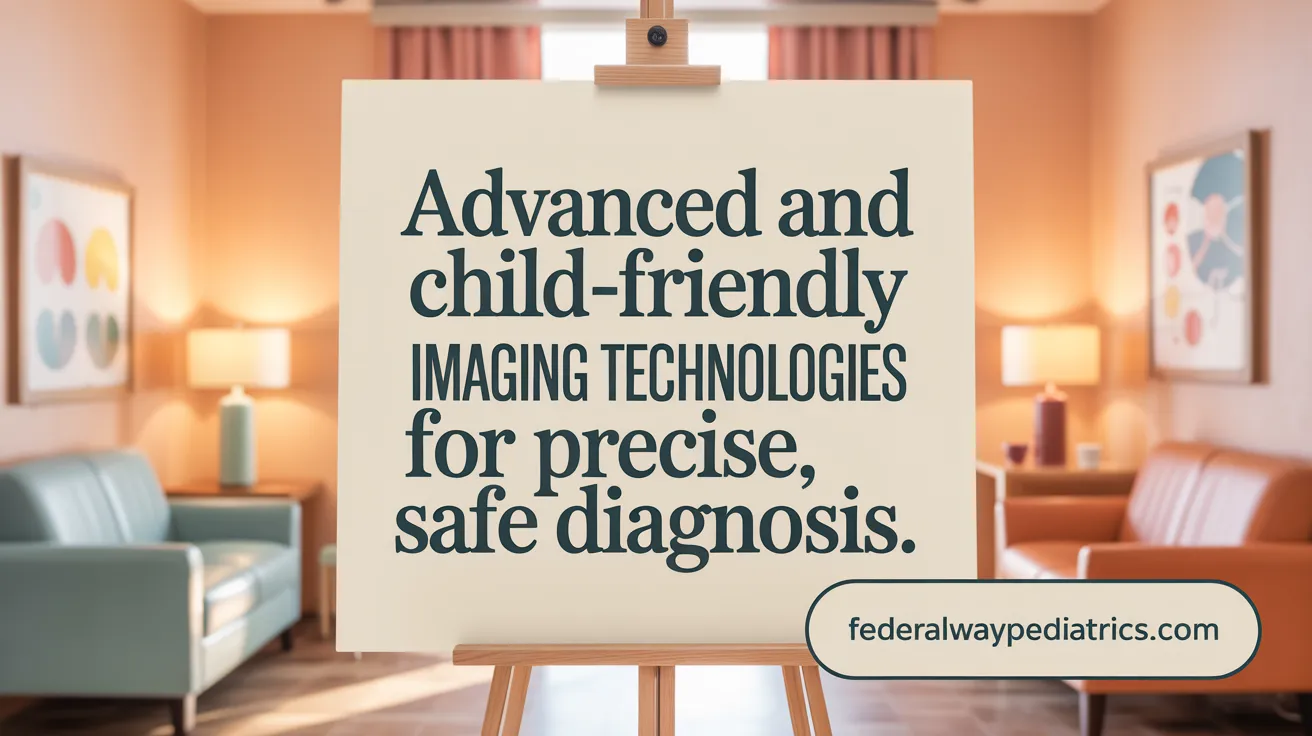
What are the recent advances in pediatric imaging?
Recent innovations in pediatric imaging have significantly enhanced diagnostic capabilities while prioritizing safety and comfort for young patients. Advanced MRI techniques now feature specialized radiofrequency coils designed specifically for infants and children, leading to improved image resolution and greater patient comfort. Silent MRI protocols reduce acoustic noise, allowing some children to undergo scans without sedation. Low-dose CT scans are also widely adopted to minimize radiation exposure without compromising diagnostic quality.
Contrast-enhanced ultrasound and Elastography have emerged as vital tools for non-invasive detection of liver diseases, vascular malformations, and cardiac anomalies. Rapid MRI sequences shorten scan times, which is crucial for acute diagnoses in pediatric emergencies. The integration of 3D and 4D imaging has enhanced visualization of complex anatomical structures, benefiting neurological assessments and surgical planning.
How do these imaging technologies address pediatric-specific challenges?
Pediatric imaging demands careful attention to unique challenges such as radiation sensitivity and patient cooperation. Low-dose CT protocols effectively reduce radiation risks traditionally associated with computed tomography. When possible, MRI and ultrasound replace CT to avoid radiation entirely.
Specialized pediatric coils and silent MRI techniques make scanning less intimidating and more tolerable, reducing the frequent need for sedation in young children. Age-specific imaging atlases and contrast protocols account for developmental brain differences, ensuring diagnostic interpretations are tailored accurately to the child's stage of growth.
These technological innovations collectively enhance diagnostic precision, expedite care, and improve the overall patient experience for pediatric populations.
Point-of-Care Testing and Remote Monitoring Enhancing Timely Diagnosis
How is point-of-care testing improving pediatric diagnostics?
Point-of-care testing (POCT) has revolutionized pediatric diagnostics by offering rapid, bedside results for several critical markers. Pediatric-specific POCT devices are designed to be portable and user-friendly, allowing healthcare providers to quickly assess biomarkers, pathogens, glucose levels, electrolytes, and blood counts without the delays typical of central laboratory testing. These devices require smaller blood samples, minimizing the discomfort for children and enabling faster clinical decisions. This rapid feedback is particularly crucial in acute pediatric conditions where timely diagnosis can significantly impact outcomes.
What is the impact of remote monitoring and telemedicine on pediatric care accessibility?
Remote monitoring leverages wearable sensors and connected health applications to continuously track vital signs and metabolic parameters in children. This real-time data collection aids in the early detection of health changes and allows personalized treatment adjustments, especially for chronic diseases like asthma and diabetes. Telemedicine platforms complement this by providing virtual consultations and follow-ups, improving accessibility for children in rural or underserved areas where specialist care may be scarce. These technologies improve continuity of care and support ongoing disease management without the need for frequent hospital visits.
Development of rapid, bedside POCT suitable for pediatric use
Pediatric POCT advancements focus on devices tailored to children's unique needs – smaller sample volumes, rapid turnaround, and ease of use – enabling immediate testing at the bedside. This enhances emergency and routine care by bringing diagnostics closer to the patient.
Markers analyzed via POCT including metabolic parameters and pathogens
Common analytes include blood glucose, electrolyte levels, infectious agents, and metabolic biomarkers. Rapid identification facilitates prompt treatment initiation and monitoring of disease progression (Innovative Pediatric Diagnostics).
Wearable sensors and connected health applications for chronic disease management
Smart wearables and apps collect continuous physiological data, empowering clinicians and caregivers with insights to adjust therapies dynamically. They reduce hospital visits and promote proactive health interventions (Innovative Pediatric Care Technologies).
Remote monitoring for diseases such as asthma and diabetes
Continuous assessment of respiratory function and glucose levels allows for early detection of exacerbations or glycemic fluctuations, improving safety and quality of life (Advancements in Pediatric Care.
Telemedicine platforms improving access for rural and underserved populations
Virtual care platforms bridge geographic barriers, offering timely specialist consultations, care plans, and education, crucial in resource-limited settings (Telemedicine in Pediatric Care.
These integrated approaches of POCT and remote technologies significantly enhance pediatric diagnostic accuracy, accessibility, and personalized care delivery.
Artificial Intelligence Transforming Pediatric Diagnostics
In what ways is artificial intelligence enhancing pediatric diagnostic accuracy?
Artificial intelligence (AI) has significantly advanced pediatric diagnostics by enabling the analysis of diverse and complex data sources such as medical imaging, genomic sequences, and electronic health records. This capability allows AI systems to recognize subtle disease patterns that might be missed in traditional evaluations. For instance, AI-assisted imaging analysis helps detect pediatric conditions including pneumonia, congenital heart defects, and tumors with accuracy comparable to expert radiologists. Machine learning models also facilitate early detection of developmental disorders like autism spectrum disorder by analyzing speech, facial expressions, and behavioral data (Artificial Intelligence in Pediatric Health, Advances in Artificial Intelligence in Pediatrics).
Predictive analytics and early disease detection
AI-powered predictive analytics examine large pediatric datasets to forecast disease progression and complications for chronic illnesses such as asthma, diabetes, and epilepsy. These tools enable clinicians to intervene proactively, improving patient outcomes. Additionally, AI algorithms applied to neonatal care predict early signs of critical illnesses like sepsis, enabling timely and potentially life-saving responses (Artificial Intelligence in Pediatric Health, AI in pediatric diagnostics.
AI-driven clinical decision support systems
AI-driven decision support tools provide pediatric healthcare professionals with evidence-based recommendations, alerting them to subtle disease manifestations and supporting personalized treatment plans. These systems help optimize resource use and improve adherence to care guidelines (Center for Artificial Intelligence in Children’s Health, Advances in Artificial Intelligence in Pediatrics.
AI applications in behavioral and developmental disorders diagnosis
Behavioral health benefits from AI by using analysis of video, audio, and sensor data to identify early signs of disorders such as speech delays and autism. Tools like Canvas Dx reduce diagnosis times, facilitating earlier intervention and tailored therapy (Advancements in Pediatrics Uses of Artificial Intelligence).
Challenges and ethical considerations in pediatric AI use
Implementing AI in pediatric care faces challenges including scarcity of pediatric-specific training data, disease complexity, privacy and consent issues, and the need for seamless integration with existing health infrastructures. Equitable access and thorough validation across diverse populations remain essential concerns to ensure safe and effective AI deployment (Artificial Intelligence in Pediatric Health, Advances in Artificial Intelligence in Pediatrics.
Examples from major children’s hospitals utilizing AI
Leading institutions like Children’s National Hospital, Mount Sinai, Cincinnati Children’s Hospital, and Rady Children’s Hospital are pioneering AI innovations. Their projects include genomic data interpretation, predictive analytics for disease risk, and generative AI models improving cancer care and rare disease treatment. These initiatives harness cloud computing and machine learning to shorten diagnostic times and enhance personalized medicine.
Collaborative and Patient-Centric Approaches in Pediatric Diagnostics
How does multidisciplinary collaboration improve pediatric diagnostic outcomes?
Collaborative care models bring together pediatricians, geneticists, radiologists, nurses, and allied health professionals to work as a team delivering comprehensive and coordinated evaluations. This multidisciplinary approach facilitates better communication among healthcare providers, which is critical to reducing diagnostic errors often seen in complex pediatric cases. The teamwork ensures that different perspectives are integrated into each diagnosis, allowing development of individualized care plans tailored to children’s unique genetic, developmental, and clinical profiles. Through regular discussions and shared decision-making, these teams manage complexities more effectively, improving accuracy and enhancing health outcomes. This approach is well described in Multidisciplinary Pediatric Care Models and Collaborative Pediatric Evaluations.
What innovations support child engagement and reduce anxiety during diagnostic procedures?
Patient-centered innovations focus on easing the diagnostic experience for children by using child-friendly tools and techniques. Medical devices designed with bright colors and ergonomic shapes appeal to children, helping to reduce fear and resistance. Immersive virtual and augmented reality applications distract young patients during scans or tests, mitigating anxiety and improving cooperation. Gamified digital platforms educate children about their health in fun and interactive ways, building engagement and understanding. Additional psychosocial supports, such as art and music therapy, address emotional needs and further decrease distress. Collectively, these strategies promote smoother diagnostic workflows and foster positive healthcare experiences for pediatric patients. For further detail, see Child-Friendly Medical Devices and Gamified Pediatric Health Education.
How are families involved in pediatric diagnostic processes?
Family engagement is integral to pediatric diagnostics, enhancing both communication and adherence to diagnostic plans. Multidisciplinary teams actively include parents and caregivers during assessment discussions, supporting shared understanding and decision-making. This involvement increases trust in care plans and equips families with knowledge to manage follow-up treatments effectively. Integrating families also helps clinicians gather comprehensive histories and contextual patient information that improves diagnostic accuracy. These practices are supported by research on Caregiver support and mental health services and effective Care coordination resources.
What regulatory and ethical frameworks protect children during diagnostic innovations?
Robust regulatory guidelines ensure safety, efficacy, and ethical standards in pediatric diagnostic tools and procedures. These frameworks emphasize informed consent adapted for minors, data privacy protections, and equitable access to emerging technologies. Ethical oversight mandates rigorous testing before pediatric use to minimize harm, acknowledging children’s physiological differences from adults. Ongoing surveillance and policy efforts aim to balance innovation with child rights and safety, fostering responsible advancement in pediatric diagnostics. Comprehensive discussion of these issues is found in Regulatory and ethical considerations in pediatric diagnostics and the Value Assessment Framework for Child Health Technologies.
Bridging Gaps in Pediatric Device Innovation and Testing
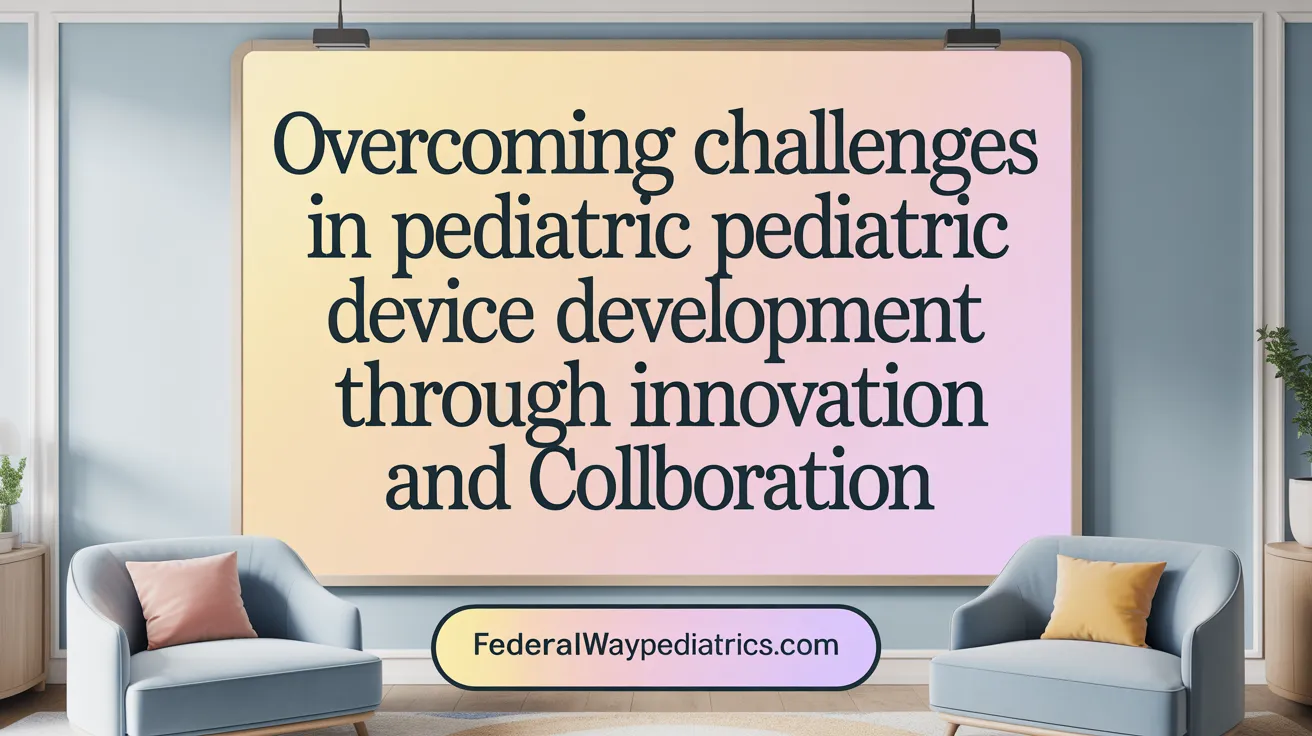
Why is pediatric medical device innovation lagging behind adult device development?
Pediatric medical device innovation falls behind adult device development by up to a decade. Key reasons include a smaller market size and significant physiological differences in children, who vary widely in size and development stages. These factors complicate device design and testing. Ethical challenges, such as obtaining consent and addressing diverse pediatric populations, further slow clinical trials. Consequently, more than 60% of pediatric cardiac catheterization cases use adult devices off-label, risking safety and effectiveness due to lack of pediatric-specific validation. For more details on these challenges, see Innovation in pediatric medical devices.
What are the risks of off-label use of adult devices in pediatrics?
Off-label use means pediatric patients receive devices not formally tested or approved for their age group. This practice raises concerns about improper sizing, unrecognized side effects, and reduced efficacy. Moreover, about 79% of high-risk therapeutic devices lack FDA approval for pediatric use, and 40% of those approved were studied without involving children, substantiating these risks. Refer to The crucial need for innovation in pediatric medical devices for further information.
What regulatory and ethical challenges impact pediatric device trials?
Regulatory pathways for pediatric devices differ substantially from adult devices. Pediatric device trials are often smaller, iterative, and must address unique ethical considerations, making recruitment and consent more complex. These challenges delay approval and contribute to reliance on off-label devices. Additional insights can be found in Improving the Infrastructure for Pediatric Medical Devices.
Which initiatives are supporting pediatric device innovation?
Several initiatives are dedicated to fostering innovation and overcoming these challenges. The Consortium for Technology & Innovation in Pediatrics (CTIP) supports over 200 pediatric devices with funding, regulatory advice, and networking since 2011. The Pediatric Medical Devices Public-Private Partnership (PMD-PPP) creates ecosystems fostering collaboration between clinicians, researchers, and industry stakeholders.
How are dedicated clinical trial units and streamlined pathways helping?
Hospitals like Texas Children's and Baylor College of Medicine are establishing dedicated clinical trial units focused on pediatric device research. These units facilitate efficient study designs, standardized protocols, and regulatory compliance tailored to children's needs, accelerating device evaluation and approval. Learn more about these advancements in Panel highlights advancements and opportunities in pediatric medical device innovation.
What market and physiological challenges are unique to children?
Children's ongoing growth and anatomical diversity demand devices adaptable to different sizes and developmental stages. The relatively low healthcare spending on children compared to adults creates a smaller commercial incentive for device makers. Ethical concerns around testing vulnerable pediatric groups and heterogeneity in disease presentation add complexity to research efforts. These themes are discussed in detail at Improving the Infrastructure for Pediatric Medical Devices.
These combined factors underline the critical need for continued investment, collaboration, and innovative regulatory approaches to bridge gaps in pediatric device development, ensuring safer and more effective therapies tailored to children's unique needs.
Advances in Biomarker and Molecular Diagnostics
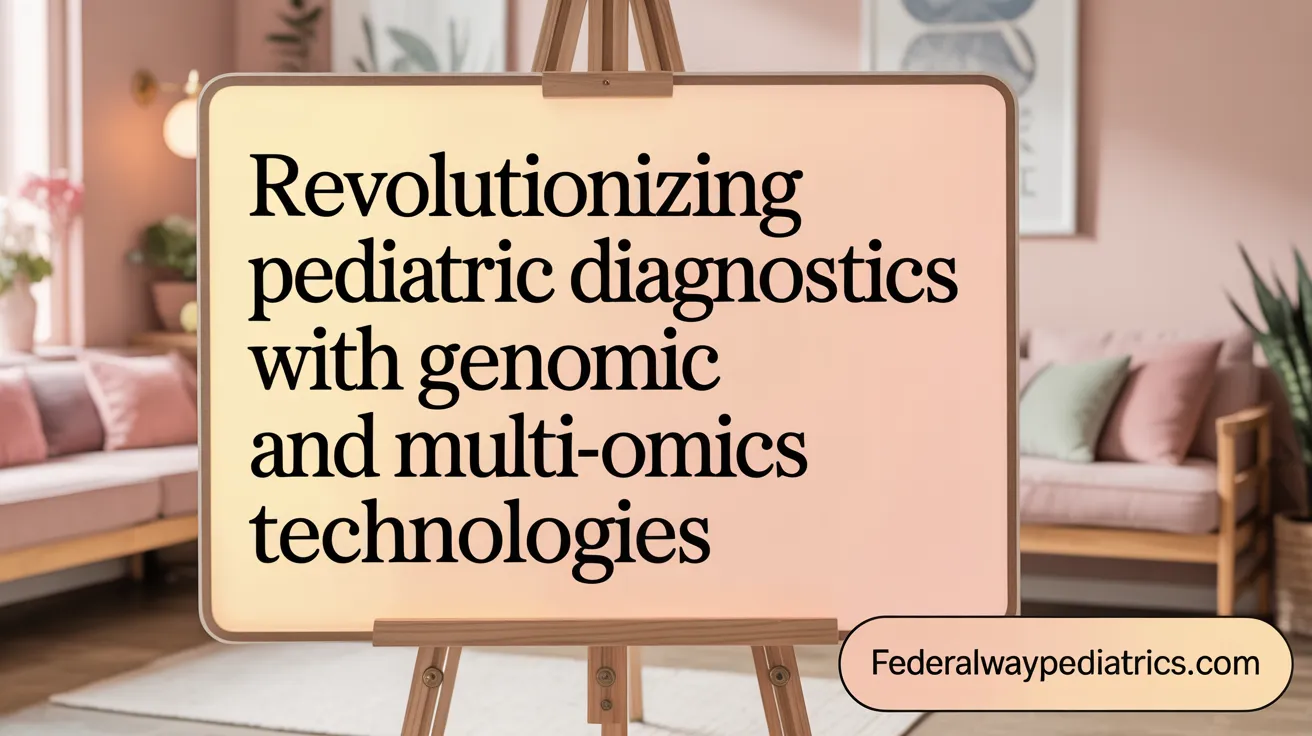
How are biomarkers and molecular profiling improving pediatric diagnostics?
Biomarkers play a pivotal role in the early detection of pediatric diseases and in monitoring treatment responses. For instance, biomarkers for chemotherapy cardiotoxicity like high-sensitivity cardiac troponin assays are instrumental in detecting chemotherapy-induced cardiotoxicity in children undergoing cancer treatment, enabling timely intervention to prevent heart damage. Molecular profiling in pediatrics enriches diagnostic precision, particularly in pediatric oncology diagnostics and sepsis. By analyzing genetic, proteomic, and metabolic characteristics, clinicians can better differentiate cancer subtypes and identify sepsis biomarkers, which facilitates the application of targeted therapies and improves prognosis. Proteomics and metabolomics delve into protein modifications and metabolic pathways, uncovering diagnostic, predictive, and prognostic signatures unique to pediatric conditions. These multi-omics approaches contribute to a deeper understanding of disease mechanisms and personalize healthcare.
What is the role of pharmacogenomics in pediatric care?
Pharmacogenomics tailor medication regimens by accounting for a child’s genetic makeup influencing drug absorption, metabolism, and effects. This is crucial since children exhibit distinct pharmacokinetic and pharmacodynamic profiles compared to adults. Utilizing pharmacogenomics helps optimize drug dosing, minimize adverse reactions, and enhance therapeutic efficacy, especially in complex pediatric diseases requiring precise intervention.
Integration of Multi-Omics Data for Personalized Medicine
The combination of genomics, proteomics, metabolomics, and transcriptomics allows the construction of holistic molecular portraits of pediatric diseases. Integrating these data streams supports predictive analytics and individualized treatment plans, aligning with the principles of precision medicine in pediatrics. Such integrative diagnostics promise improved outcomes by matching therapies with the patient’s unique biological profile.
Ethical, Regulatory, and Equity Considerations in Pediatric Testing
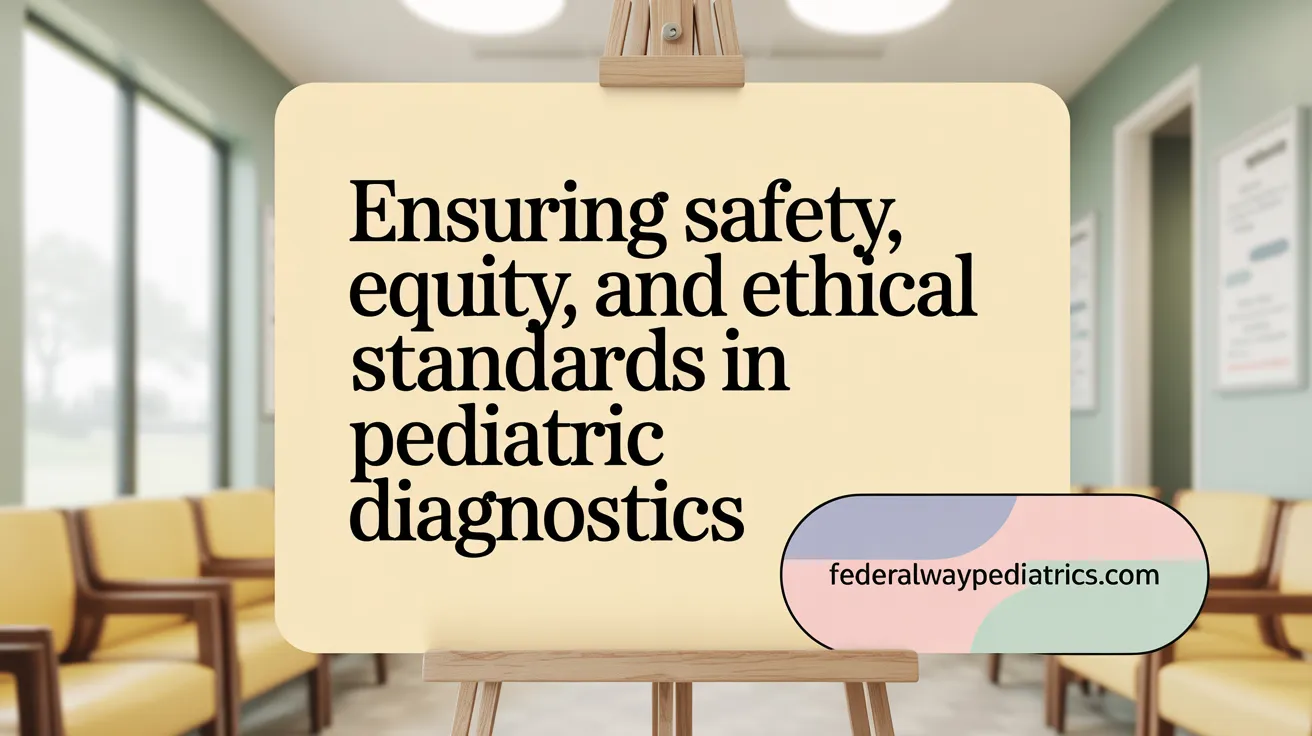
What ethical and regulatory challenges influence pediatric diagnostic innovation?
Innovation in pediatric diagnostics is guided by rigorous ethical considerations in pediatric diagnostics and regulatory standards to ensure safety and effectiveness for children, who are a particularly vulnerable population. Informed consent processes are more complex compared to adults, necessitating clear communication tailored to both children and guardians. A major challenge lies in the paucity of pediatric-specific clinical trial data, resulting from difficulties in enrolling children and ethical concerns as discussed in Challenges in pediatric clinical trials. Age-appropriate validation is crucial, as many diagnostic tools initially designed for adults may not perform accurately in pediatric populations. Protecting patient confidentiality and data privacy is paramount, especially when integrating genetic testing and molecular profiling in children and AI-based analyses in pediatric diagnostics, requiring adherence to strict data security and ethical frameworks.
How do disparities affect access to pediatric diagnostic testing?
Access to pediatric diagnostic services is unevenly distributed, impacted by geographic isolation, socioeconomic status, and systemic healthcare disparities. For example, newborn screening programs vary widely among U.S. states, with some screening for as few as 33 conditions, while others test for over 70, leading to unequal health outcomes. Limited availability of age-appropriate testing technologies and the use of adult-validated tests for children contribute to diagnostic inaccuracies. Families in rural or underserved areas face substantial barriers, including travel distances and cost burdens. This inequity is addressed through initiatives such as outreach clinics, mobile testing units, culturally sensitive education programs, and efforts to improve price transparency to reduce financial obstacles.
Efforts to improve transparency and affordability
Rising healthcare costs and limited clarity in pricing present challenges for families seeking pediatric diagnostics. Policies like the Centers for Medicare & Medicaid Services (CMS) price transparency rules aim to alleviate these issues but have not eliminated barriers entirely. Improved transparency in test costs and coverage helps families make informed decisions and facilitates access to necessary diagnostics. Educational programs empower caregivers by increasing health literacy and reducing anxiety related to testing.
Role of regulations and frameworks like CATCH to assess pediatric health technologies
To better evaluate pediatric health technologies, frameworks such as the CATCH (Child health And Technology) model apply multicriteria decision analysis incorporating child-specific factors beyond traditional measures. Key criteria include disease severity, therapeutic safety, family impact, equity, and life-course considerations. Such frameworks guide regulators and healthcare stakeholders in balancing clinical effectiveness with ethical and social dimensions unique to pediatric diagnostics, promoting equitable and responsible deployment of innovations.
Future Directions: Integrating Technologies for Holistic Pediatric Care
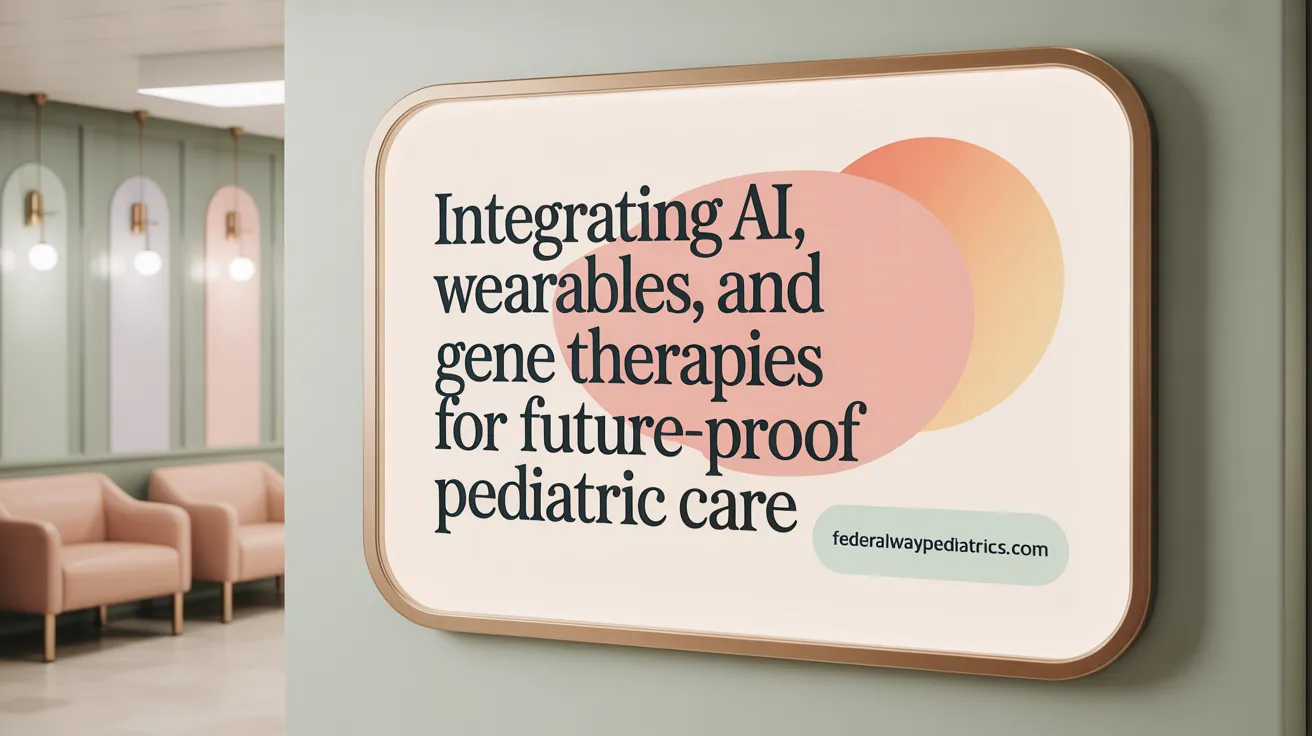
What future technologies are shaping pediatric diagnostics?
Pediatric diagnostics are evolving through the integration of Artificial Intelligence in Pediatric Health (AI) with diverse datasets, including Genomics in pediatric diagnosis, Advanced Pediatric Imaging, and environmental factors. AI-driven data ecosystems enable predictive analytics that can identify disease risks early, allowing for timely interventions tailored to each child's unique profile. This precision approach extends beyond diagnostics to support personalized treatment planning (Precision Medicine in Pediatrics).
Wearable digital health sensors continue to advance, becoming increasingly miniaturized and capable of continuous, real-time monitoring of vital signs and disease markers (Wearable Sensors for Children, Digital Health Technologies in Pediatric Trials). These technologies empower clinicians to make dynamic treatment adjustments for chronic pediatric conditions such as asthma and diabetes, improving patient outcomes (Remote Pediatric Monitoring.
Immersive virtual and augmented reality (VR/AR) technologies are gaining ground in pediatric care. They offer non-invasive support by reducing anxiety during procedures and providing interactive platforms for diagnostics and rehabilitation therapies (Virtual and augmented reality for pediatric procedure distraction), increasing cooperation and comfort among young patients.
Gene therapy and genome editing platforms, utilizing tools such as CRISPR, are expanding their role from solely treatment modalities to include diagnostic capabilities. These innovations promise to revolutionize management of rare genetic disorders by enabling precise correction of genetic defects (Gene therapy for genetic disorders in children) and tailored therapeutic interventions.
How is the pediatric innovation ecosystem evolving to support these advancements?
The pediatric innovation landscape is increasingly characterized by cross-disciplinary collaboration. Initiatives like the Hood Pediatric Innovation Hub exemplify this model by integrating expertise from engineering, life sciences, clinical practice, and regulatory affairs. Such collaborative platforms drive the translation of research into practical pediatric healthcare solutions.
Sustainability is a central focus in current efforts. There is emphasis on moving successful pilot projects into scalable, equitable clinical applications that ensure broad patient access regardless of geographic or socioeconomic barriers (Children and youth with medical complexity care). Ongoing clinical validation and regulatory harmonization contribute to the safe and effective adoption of emerging technologies (Pediatric Diagnostics Regulatory Frameworks.
Furthermore, consortia and networks that include clinicians, researchers, industry partners, and patient advocates are instrumental in addressing the complex challenges of pediatric innovation. This ecosystem fosters knowledge exchange, facilitates funding and clinical trial infrastructure (Consortium for Technology & Innovation in Pediatrics), and accelerates the development timeline from concept to bedside.
Together, these evolving dynamics promise a holistic and sustainable future for pediatric diagnostics and treatments, leveraging cutting-edge technologies to improve health outcomes for children worldwide.
Towards a Future of Enhanced Pediatric Diagnostic Precision
The landscape of pediatric testing and diagnosis is rapidly evolving through innovations in genomics, imaging, artificial intelligence, and patient-focused care models. These technological advancements enable earlier, more accurate detection of pediatric diseases while personalizing treatment strategies to the unique physiological and developmental needs of children. Simultaneously, efforts to address ethical, regulatory, and equity challenges seek to ensure safe, accessible, and effective diagnostic services for all pediatric populations. As interdisciplinary collaboration and digital health integration continue to advance, the prospects for transforming pediatric diagnostics into a paradigm of predictive, preventive, and personalized care are increasingly within reach, promising improved health outcomes and quality of life for children worldwide.
